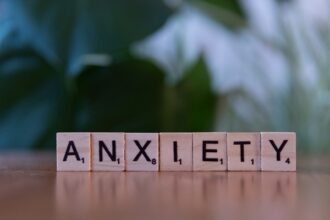Childhood trauma encompasses a range of experiences that can significantly impact a person’s emotional and psychological development. It can stem from various sources, including physical, emotional, or sexual abuse, neglect, or witnessing violence. As you reflect on your own experiences, you may recognize that trauma is not solely defined by the severity of the event but also by how it affects you personally.
The way you perceive and process these experiences can shape your understanding of the world and your place within it. Recognizing childhood trauma is the first step toward healing. It requires you to confront uncomfortable memories and acknowledge the pain they have caused.
This process can be daunting, as it often involves revisiting moments that you may have buried deep within your subconscious. However, understanding the roots of your trauma is essential for breaking free from its grip. By acknowledging these experiences, you empower yourself to begin the journey toward healing and reclaiming your life.
Key Takeaways
- Childhood trauma can have long-lasting effects on mental and physical health, as well as on relationships and overall well-being.
- Recognizing the impact of childhood trauma on adult life is the first step towards healing and seeking support.
- Seeking professional help and support is crucial in addressing and processing childhood trauma.
- Developing coping skills and self-care strategies can help individuals manage the effects of childhood trauma and build resilience.
- Building resilience and strength is possible through finding meaning and purpose in the healing journey and creating a new narrative and identity beyond trauma.
Recognizing the Impact of Childhood Trauma on Adult Life
The effects of childhood trauma can manifest in various ways throughout your adult life. You may find that certain triggers evoke intense emotional responses or that you struggle with relationships due to trust issues. These patterns often stem from the coping mechanisms you developed as a child to survive difficult situations.
As an adult, these same mechanisms may hinder your ability to form healthy connections or pursue fulfilling experiences. Moreover, childhood trauma can lead to mental health challenges such as anxiety, depression, or post-traumatic stress disorder (PTSD). You might notice that certain situations provoke overwhelming feelings of fear or sadness, even if they seem unrelated to your past.
Understanding this connection is crucial for recognizing that your reactions are valid and rooted in your experiences. By acknowledging the impact of childhood trauma on your adult life, you can begin to take steps toward healing and reclaiming your sense of self.
Seeking Professional Help and Support

Seeking professional help is a vital step in addressing the effects of childhood trauma. A trained therapist or counselor can provide a safe space for you to explore your feelings and experiences without judgment. They can guide you through the complexities of your emotions and help you develop coping strategies tailored to your unique situation.
It’s important to remember that reaching out for help is a sign of strength, not weakness. Support groups can also be beneficial in your healing journey. Connecting with others who have experienced similar traumas can foster a sense of community and understanding.
Sharing your story and hearing others’ experiences can help you feel less isolated in your struggles. Whether through individual therapy or group support, seeking professional help is an essential component of healing from childhood trauma.
Developing Coping Skills and Self-Care Strategies
| Category | Metrics |
|---|---|
| Self-Care Activities | Number of self-care activities practiced per week |
| Stress Levels | Self-reported stress levels on a scale of 1-10 |
| Coping Strategies | Types of coping strategies used (e.g. deep breathing, mindfulness, exercise) |
| Social Support | Frequency of engaging with supportive friends or family members |
As you embark on your healing journey, developing coping skills and self-care strategies becomes paramount. These tools can help you manage overwhelming emotions and navigate challenging situations more effectively. You might consider incorporating mindfulness practices into your daily routine, such as meditation or deep breathing exercises.
These techniques can ground you in the present moment and provide a sense of calm amidst emotional turmoil. Additionally, establishing a self-care routine that prioritizes your physical and mental well-being is crucial. This could involve engaging in regular physical activity, maintaining a balanced diet, or ensuring you get enough rest.
Taking time for hobbies or activities that bring you joy can also serve as a powerful form of self-care. By nurturing yourself in these ways, you create a foundation for healing that allows you to face the challenges associated with childhood trauma more resiliently.
Exploring the Role of Relationships in Healing Childhood Trauma
Relationships play a significant role in the healing process from childhood trauma. The connections you form with others can either facilitate healing or perpetuate old patterns of behavior. As you work through your trauma, it’s essential to surround yourself with supportive individuals who understand your journey and respect your boundaries.
Healthy relationships can provide a sense of safety and belonging that may have been lacking during your childhood. Conversely, it’s important to recognize toxic relationships that may hinder your progress. You might find that certain individuals trigger feelings of anxiety or inadequacy, reminding you of past traumas.
Learning to set boundaries and distance yourself from these negative influences is crucial for fostering an environment conducive to healing. By cultivating positive relationships and distancing yourself from harmful ones, you create a supportive network that encourages growth and resilience.
Processing and Expressing Emotions
Processing and expressing emotions is a vital aspect of healing from childhood trauma. You may have learned to suppress your feelings as a child to cope with difficult situations, but this can lead to emotional numbness or outbursts later in life. Allowing yourself to feel and express emotions is an essential step toward reclaiming your emotional well-being.
Journaling can be an effective tool for this purpose; writing down your thoughts and feelings can help clarify your emotions and provide an outlet for expression. Engaging in creative activities such as art, music, or dance can also facilitate emotional expression. These forms of creativity allow you to communicate feelings that may be difficult to articulate verbally.
By exploring different avenues for expression, you can begin to process the complex emotions associated with your trauma and find healthier ways to cope with them.
Exploring the Connection Between Mind and Body in Healing Trauma
The connection between mind and body is a crucial aspect of healing from childhood trauma. You may find that unresolved emotional pain manifests physically through tension, fatigue, or chronic pain. Understanding this mind-body connection can empower you to address both aspects of your well-being simultaneously.
Practices such as yoga or tai chi can help bridge this gap by promoting mindfulness and physical awareness. Additionally, somatic therapies focus on releasing stored trauma from the body through movement and awareness techniques. These approaches encourage you to tune into physical sensations and emotions, allowing for a deeper understanding of how trauma affects both mind and body.
By exploring this connection, you can develop a holistic approach to healing that addresses the root causes of your distress.
Revisiting and Releasing Negative Beliefs and Self-Blame
Childhood trauma often instills negative beliefs about yourself that can persist into adulthood. You may struggle with feelings of unworthiness or self-blame, believing that you are somehow responsible for the pain you experienced. Challenging these beliefs is essential for breaking free from their hold on your life.
It requires introspection and a willingness to confront the narratives you’ve internalized over the years. Revisiting these negative beliefs involves recognizing their origins and understanding that they do not define who you are today. Cognitive-behavioral techniques can be particularly helpful in reframing these thoughts and replacing them with more empowering beliefs.
By actively working to release self-blame and cultivate self-compassion, you pave the way for a healthier self-image and a more fulfilling life.
Building Resilience and Strength
Building resilience is a vital component of healing from childhood trauma. Resilience allows you to bounce back from adversity and adapt to challenges more effectively. You may find that developing resilience involves cultivating a growth mindset—viewing setbacks as opportunities for learning rather than insurmountable obstacles.
This shift in perspective can empower you to face difficulties with greater confidence. Additionally, surrounding yourself with supportive individuals who encourage resilience can enhance your ability to cope with challenges. Engaging in activities that promote personal growth—such as volunteering or pursuing new interests—can also contribute to building resilience.
By actively seeking opportunities for growth and connection, you strengthen your ability to navigate life’s ups and downs with grace.
Finding Meaning and Purpose in the Healing Journey
Finding meaning and purpose in your healing journey is essential for fostering hope and motivation. You may discover that reflecting on your experiences allows you to identify valuable lessons learned through adversity. This process can lead to a deeper understanding of yourself and what truly matters in life.
As you navigate the complexities of healing, consider how your experiences have shaped your values and aspirations. Engaging in activities that align with your newfound sense of purpose can further enhance your healing journey.
By embracing meaning in your journey, you cultivate resilience and hope for the future.
Creating a New Narrative and Identity Beyond Trauma
Creating a new narrative and identity beyond trauma is a powerful step toward reclaiming your life. You have the opportunity to redefine who you are based on your strengths, values, and aspirations rather than being defined solely by past experiences. This process involves embracing vulnerability while also celebrating your resilience and growth.
As you craft this new narrative, consider how you want to view yourself moving forward. What qualities do you want to embody? What goals do you wish to pursue?
This journey is not about forgetting the past but rather integrating it into a broader narrative that honors both your struggles and triumphs. In conclusion, healing from childhood trauma is a multifaceted journey that requires patience, self-compassion, and support.
By understanding the impact of trauma on your life, seeking professional help, developing coping skills, nurturing relationships, processing emotions, exploring mind-body connections, challenging negative beliefs, building resilience, finding meaning, and creating a new narrative, you embark on a transformative path toward healing and empowerment. Remember that this journey is uniquely yours; embrace each step as an opportunity for growth and renewal.
In the journey of healing childhood trauma, understanding the underlying psychological mechanisms is crucial. An insightful article that delves into this topic can be found on Unplugged Psychology’s website. This resource provides valuable perspectives on therapeutic approaches and coping strategies that can aid in the healing process. For more detailed information, you can read the full article by visiting Unplugged Psychology. This article offers a comprehensive look at how individuals can work through their past traumas to achieve emotional well-being.
WATCH THIS! Hyper-Independence Is Not Strength
FAQs
What is childhood trauma?
Childhood trauma refers to any distressing or disturbing experience that a child goes through during their formative years. This can include physical, emotional, or sexual abuse, neglect, witnessing domestic violence, or any other event that threatens a child’s sense of safety and security.
What are the effects of childhood trauma?
Childhood trauma can have long-lasting effects on a person’s physical, emotional, and mental well-being. It can lead to issues such as anxiety, depression, post-traumatic stress disorder (PTSD), substance abuse, and other mental health disorders. It can also impact a person’s ability to form healthy relationships and lead a fulfilling life.
How can childhood trauma be healed?
Healing from childhood trauma often involves seeking professional help from therapists or counselors who specialize in trauma-informed care. Treatment may include various forms of therapy such as cognitive behavioral therapy (CBT), eye movement desensitization and reprocessing (EMDR), and other evidence-based approaches. Building a strong support network, practicing self-care, and engaging in activities that promote healing and self-expression can also be beneficial.
Is it possible to fully recover from childhood trauma?
While the effects of childhood trauma can be long-lasting, it is possible for individuals to experience significant healing and lead fulfilling lives. With the right support, therapy, and self-care practices, many people are able to overcome the impact of their childhood trauma and thrive in adulthood. It’s important to seek help and support when dealing with childhood trauma.




